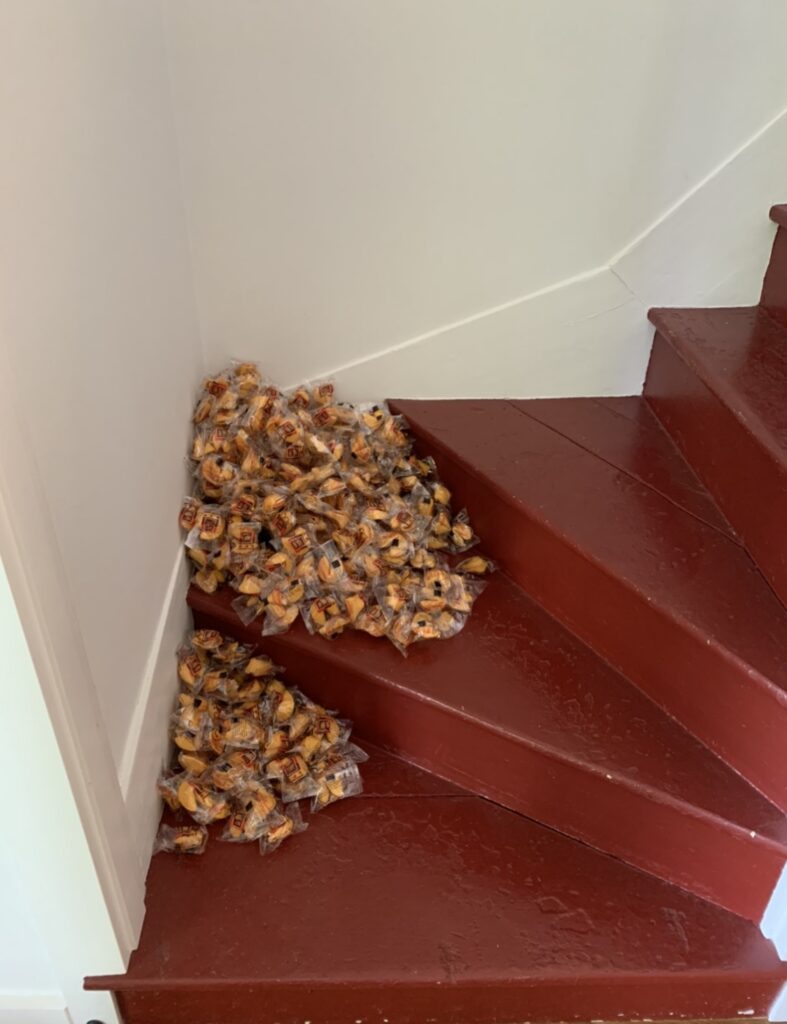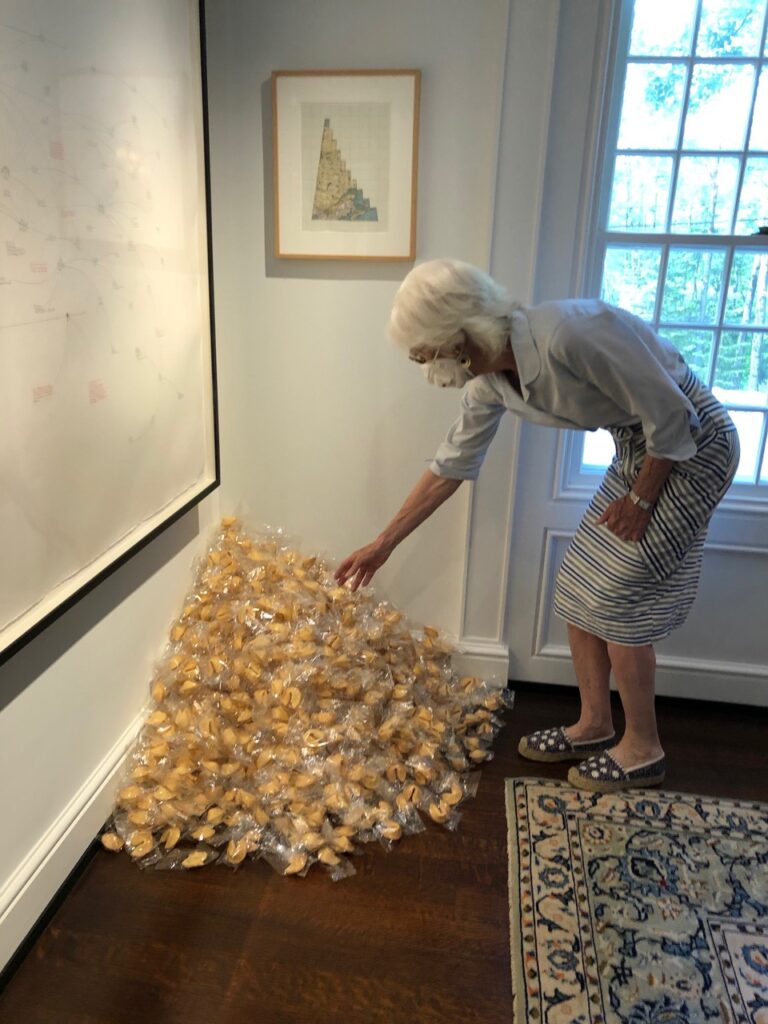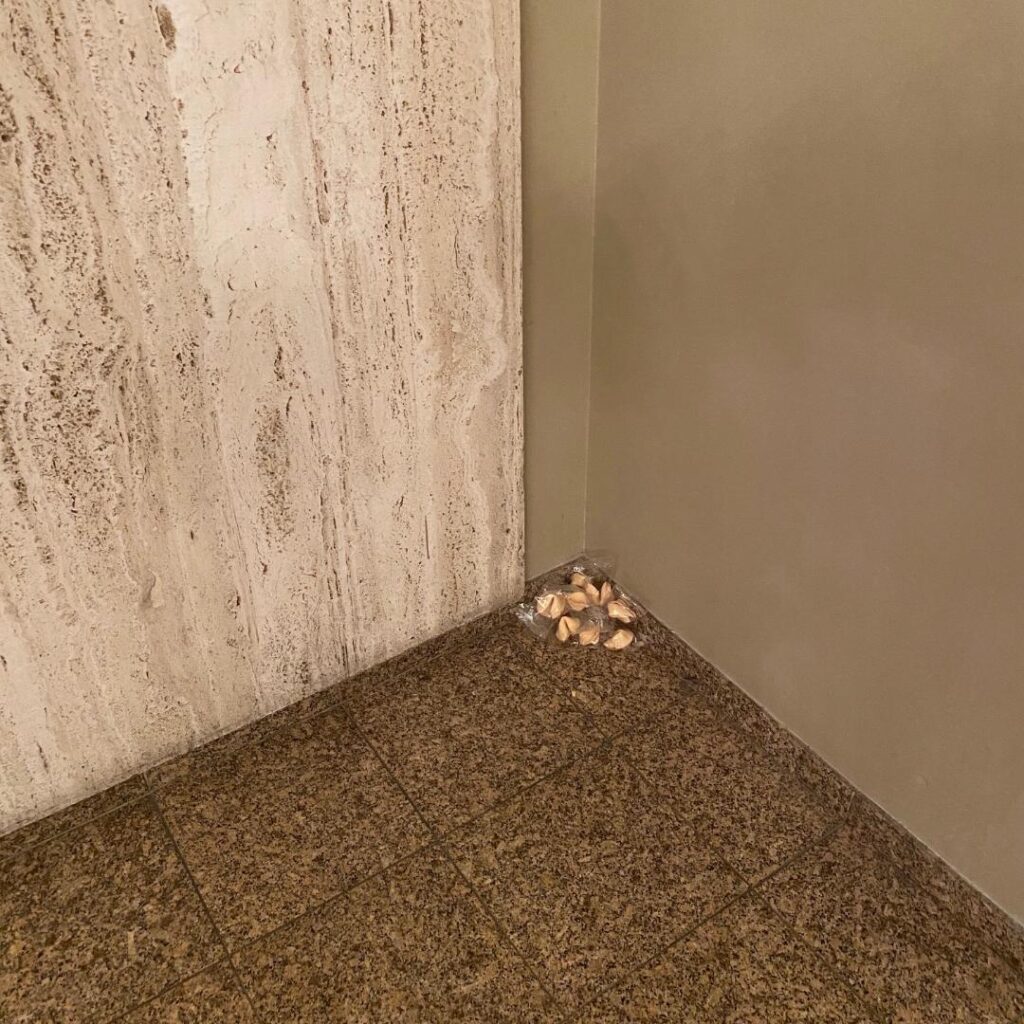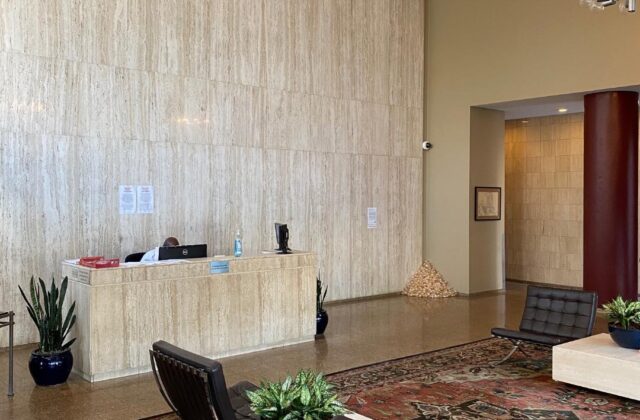International Art Exhibition Has Two Locations in Norfolk
Re-creation of a 1990 sculpture is made out of hundreds of fortune cookies
By Ruth Melville

The Cuban-born artist Felix Gonzalez-Torres died of complications from AIDS in 1996, when he was only 38 years old. But this spring, inspired in part by the coronavirus pandemic, the Andrea Rosen and David Zwirner galleries, working on behalf of his estate, decided to re-create his 1990 piece called “Untitled” (Fortune Cookie Corner). This work is one of a series of sculptures the artist created by piling mounds of small cellophane-wrapped candies or sweets on the gallery floor that visitors were invited to take freely. As the pile diminished, it would be replenished: loss leading to regeneration.
For this new version of the Fortune Cookie Corner, the organizers invited 1,000 people around the world—artists, curators, friends of the artist—to install their own version of the work. Although the original piece contained 10,000 cookies (described as “an endless supply”), each participant could choose somewhere between 240 and 1,000 cookies, which they had to source themselves, not easy to do during a pandemic, and which they could place wherever they wished, public or private, indoors or out. In the end, about 350 people agreed to host a “place,” which is what each part of the total “site” of the exhibition is called.
Installations were supposed to go on view on May 25, the piles were to be replenished about half way through the project, on June 14, and the exhibit is to officially end on July 5. After that date, the fortune cookies are no longer art, they’re just . . . cookies.
Of the 350 international “places” for the exhibition, two of them are here in Norfolk, one installed by Tom Burr, the other by Jean Crutchfield and Robert Hobbs.
The artist Tom Burr knew Gonzalez-Torres well, both through the art world and through ACT UP. They were in several exhibitions together, and Burr remembers Gonzalez-Torres’s first show at Andrea Rosen in 1990. “That makes it all the more poignant for me, more powerful, to have this piece in my home at this time.” Burr has chosen to place his pile of 350 fortune cookies in the corner of a small old staircase, the one remaining part of the original house after it was remodeled.

Jean Crutchfield, a gallerist and independent curator, and Robert Hobbs, an art critic and professor of art history, are also longtime admirers of Gonzalez-Torres’s life and work. Crutchfield remembers him as “a sweet, kind and generous person,” and Hobbs has written scholarly articles about his work. They have placed their 1,000 fortune cookies in the corner of a room on the first floor of their house. Since Gonzalez-Torres’s candy pieces reference Robert Smithson’s well-known “non-sites”—piles of rocks and dirt in the corner of a gallery, often including mirrors or glass—they have hung a Smithson collage above the pile of cookies and placed a book open to photographs of his “Sandstone Corner Piece” on a nearby table.
Both of the Norfolk installations are in private homes, although visitors are welcome to come see the work and take away cookies. In contrast, another “place” in Connecticut is more public. Patricia Hickson, curator of contemporary art at the Wadsworth Atheneum in Hartford, has chosen to put her pile of 700 fortune cookies in the lobby of her I. M. Pei apartment building (which also has businesses in it). Her cookies ran out before June 14, so the corner was empty for a few days. “I had doubts that people would pick up a cookie during the coronavirus pandemic,” she says, “but clearly people are loving it.”

Although some in the art world have questioned the timing of the re-creation—staging a public, participatory work in the midst of a global lockdown—Burr thinks this is a fantastic moment to remember Gonzalez-Torres. At a time of death and loss, such as we experienced during the AIDS crisis, his work speaks to thoughts of loss and regeneration, public and private, physical contact and distancing, participation and community.
Hobbs, too, thinks the timing is absolutely fitting. “During this pandemic,” he says, “the idea of hundreds of piles of fortune cookies across the planet looking beyond our currently overwhelming tragedies to more hopeful futures is a timely and much needed metaphor.” He also simply loves the absurdity of making sculpture out of cookies.
You can see photos and videos of these and the myriad other locations of “Untitled” (Fortune Cookie Corner) on the Andrea Rosen Gallery website.
Photo, top, of Felix Gonzalez-Torres’s “Fortune Cookie Corner” in the lobby of Patricia Hickson’s building in Hartford, by Patricia Hickson.

